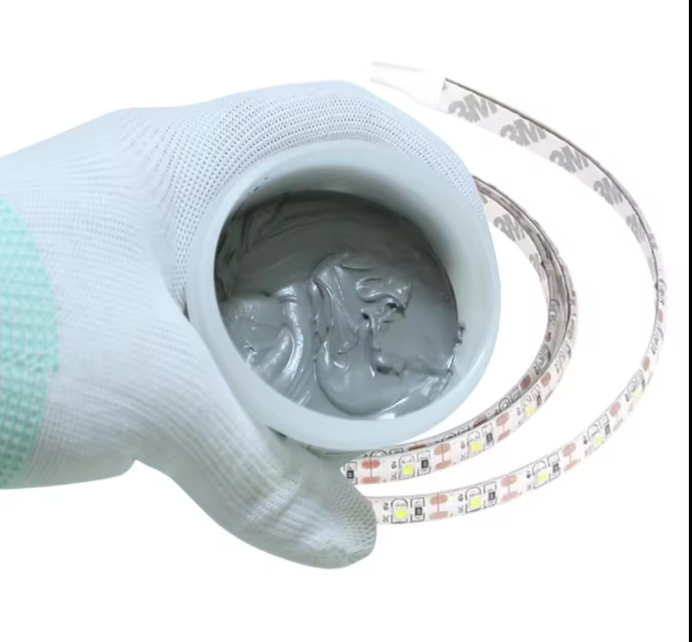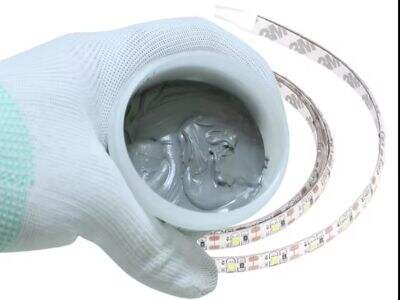Boosting Production Efficiency in Light-emitting Diode Strips: Innovations and Optimizations in Welding Processes
LED strips have become popular for a complete lot of applications being various such as lighting, design, and signaling. However, as need grows, so does the need for faster, safer, plus much more efficient production. We shall explore the most recent innovations and optimizations in Welding Processes for LED strips by Hong Sheng, and just how they will allow you to raise your production capacity and quality.

Introduction: Why Welding Matters?
Welding is the process of joining two metal components by melting their edges and permitting them to fuse together. In the case of LED strips, Solder Tools can be used to connect the light-emitting diodes (LEDs) to the tracks that are conductive power them. This technique is a must since it determines the reliability, durability, and performance for the LED strip. A defectively welded strip could cause malfunctions, power losses, and safety hazards. A well-welded strip can guarantee consistent brightness, color, and lifespan, along with higher customer care and loyalty on the other hand.
Benefits
On the years that are full Welding Processes for LED strips have evolved to meet the requirements concerning the market. Some of the main benefits of these innovations and optimizations are:
- Speed: Welding machines can operate at higher now frequencies, permitting for faster and much more precise welding. This means you can create more LED strips in an hour, reducing times that are lead increasing your income.
- Accuracy: Welding machines are now able to detect the precise positioning distance between the LEDs whilst the instrument, making sure the welding points are properly aligned and spaced. This decreases the alternative of brief circuits and improves the product general quality of strip.
- Safety: Welding machines can now incorporate safety features such as sensors that detect overheating, voltage spikes, or technical failures. This prevents accidents and fire hazards, protecting your workers and gear.
- Flexibility: Welding machines is currently able to adjust to sizes and that can be shapes that are different and materials of LED strips, permitting you to definitely customize your manufacturing relating to your particular needs regarding the clients. This expands your market opportunities and strengthens your competitive advantage.
- Integration: Welding machines can now keep in touch with other devices and software systems, such as CAD (computer-aided design) and MES (manufacturing execution systems). This streamlines your production flow and enhances your data analysis, enabling anyone to optimize your resources and lower your expenses.
Innovations
Now let us dive into a number regarding the innovations which may have emerged in Welding Processes for LED strips:
- Laser welding: this system uses a beam of high-intensity light to melt and fuse the steel edges. It is faster and much more precise than traditional welding, and will not require any physical contact the welding tool like the solder paste as well as the strip. It additionally generates less heat, reducing the chance of deformation or discoloration for the strip. Laser welding can be employed for both SMD (surface mount device) and COB (chip-on-panel) LED strips.
- Ultrasonic welding: this technique uses high-frequency vibrations to melt and fuse the metal edges. It really is appropriate small-sized and slim LED strips and certainly will create solid and homogenous welds. Ultrasonic welding can also create welded joints between different materials, such as for instance aluminum and copper, with the use of electrodes that are specialized. However, it needs a clear and flat area work properly, and may be suffering from temperature changes.
- Opposition welding: This technique uses a current to melt and fuse the steel edges. It really is efficient and consistent, and can produce strong and welds that are durable. Resistance welding can be used both for solder welding and automatic manual and may handle high volumes of LED strips. However, it entails a good conductivity of metal area, and may also generate sparks or electromagnetic interference.
- Induction welding: this method utilizes waves being electromagnetic heat fuse the metal edges. It is fast and energy-efficient, and does not require any gases or flames. Induction welding can also weld components that are non-metallic such as plastic or glass, through the use of conductive coatings. But, it needs a specific frequency and power level to suit the steel thickness and composition, and may generate a magnetic field that affects nearby gear.
Optimizations in Welding Processes
Aside from the innovations in welding techniques, there are also a couple of optimizations that will increase the general effectiveness quality of strip welding:
- Preparing the area: Before welding, the metal surface should be cleaned, degreased, and flattened. Which means the welding area is free of contaminants or imperfections which could affect the welding quality. Surface preparation can manually be done or with automated systems, such as for instance sandblasting, chemical etching, or plasma cleaning.
- Fixturing the strip: During welding, the LED strip to be held in a stable and protected position prevent any movement or distortion. This could easily be achieved by utilizing dedicated fixtures or clamps that fit the strip profile and stop any damage to the LEDs. Fixturing can be performed manually or with robotic hands that could adjust to significantly strip different and shapes.
- Monitoring the process: During welding, the device needs to monitor to get a handle on the welding parameters, such as for example voltage, current, and duration. This means that the welds are consistent and within the required requirements. Monitoring is done with sensors, cameras, or software packages offering real-time analysis feedback.
- Testing the product Quality: After welding, the LED strip to be tested for the electrical and mechanical properties, such as conductivity, insulation, and tensile strength. This verifies that the welding process has been successful as well as the strip is safe and reliable. Testing can be achieved manually or with automatic systems, such as for instance electrical probes, optical scanners, or pull testers.
Conclusion:
To be able to utilize the huge benefits fully of welding innovations and optimizations for LED strips, you will want to:
- Pick the correct welding and practices that fit your production needs, capacity, and budget.
- Train your workers on the welding process, safety procedures, and quality standards.
- Evaluate the link between your welding process, and adjust the parameters if necessary, to achieve the most useful output efficiency.
- Provide high-quality LED strips to your customers that meet their expectations and exceed their demands.
By embracing the welding innovations that are latest and optimizations, it is possible to increase your production efficiency, lessen your expenses, while upping your customer care. Welding isn't only a continuing technical process but in addition an art form that will require experience, creativity, and diligence. While using the right tools, you can set that you are able to create LED strips that illuminate the world and enrich people's lives.
 EN
EN
 AR
AR
 FR
FR
 DE
DE
 RU
RU
 VI
VI
 TH
TH
 TR
TR
 MS
MS
 BE
BE


